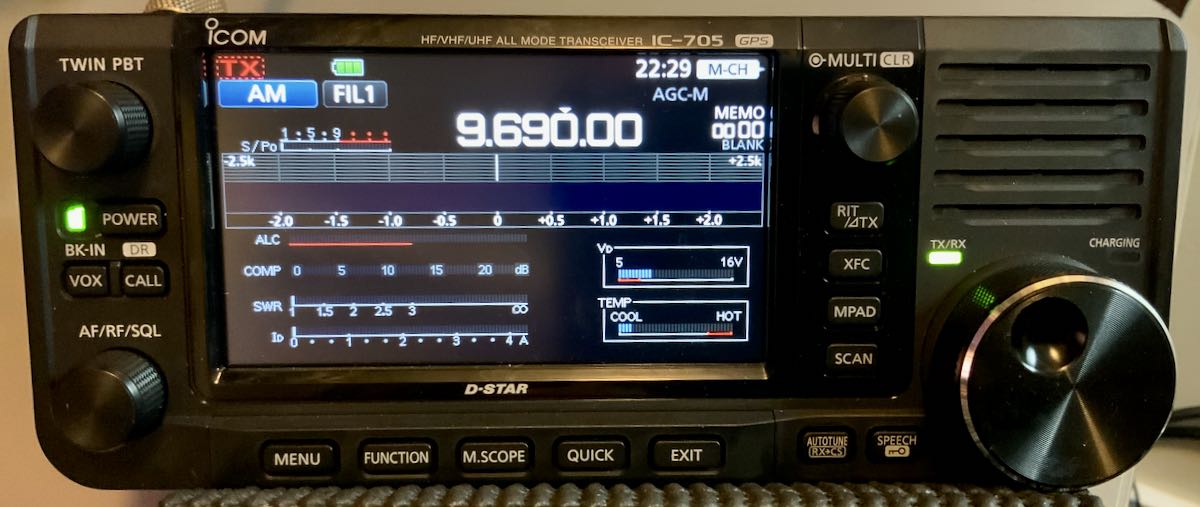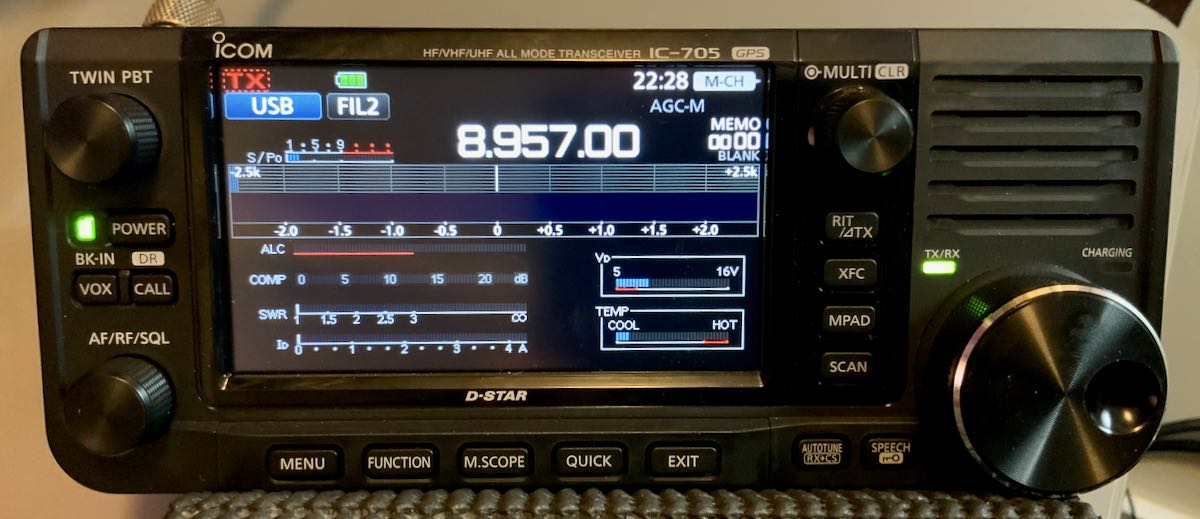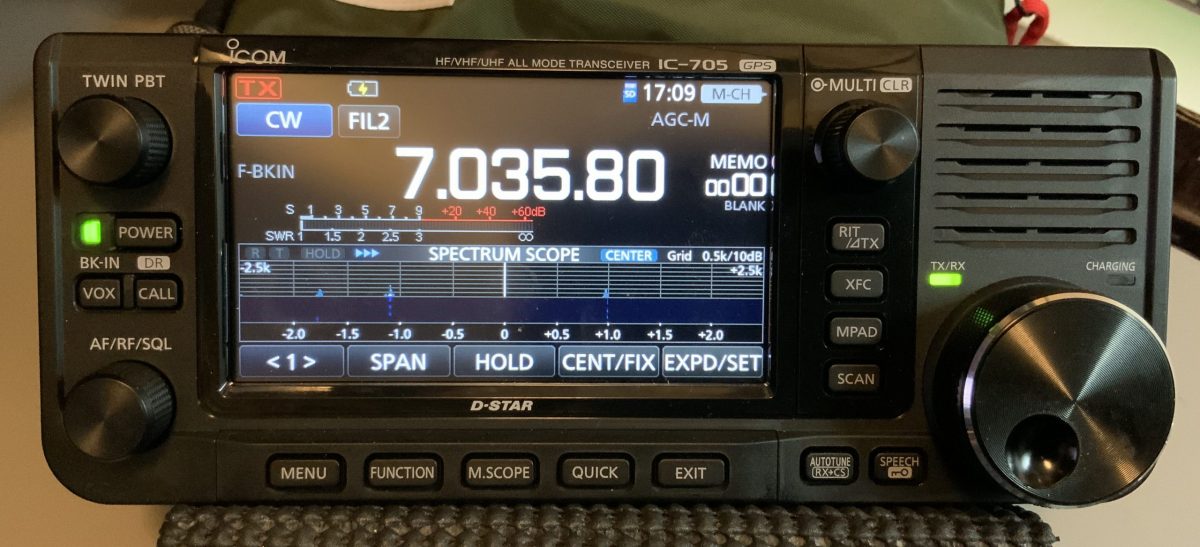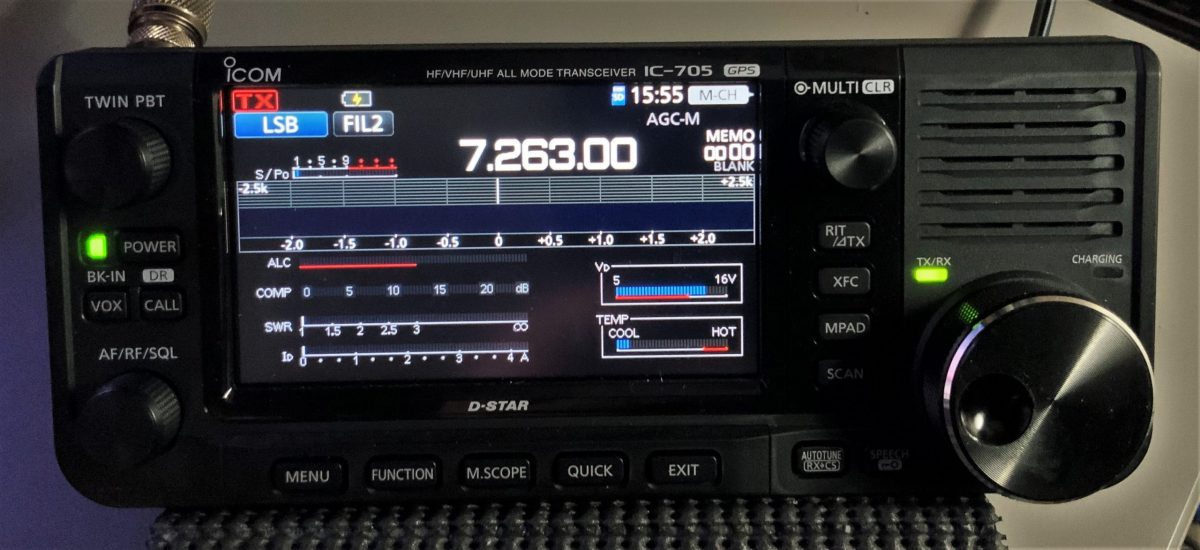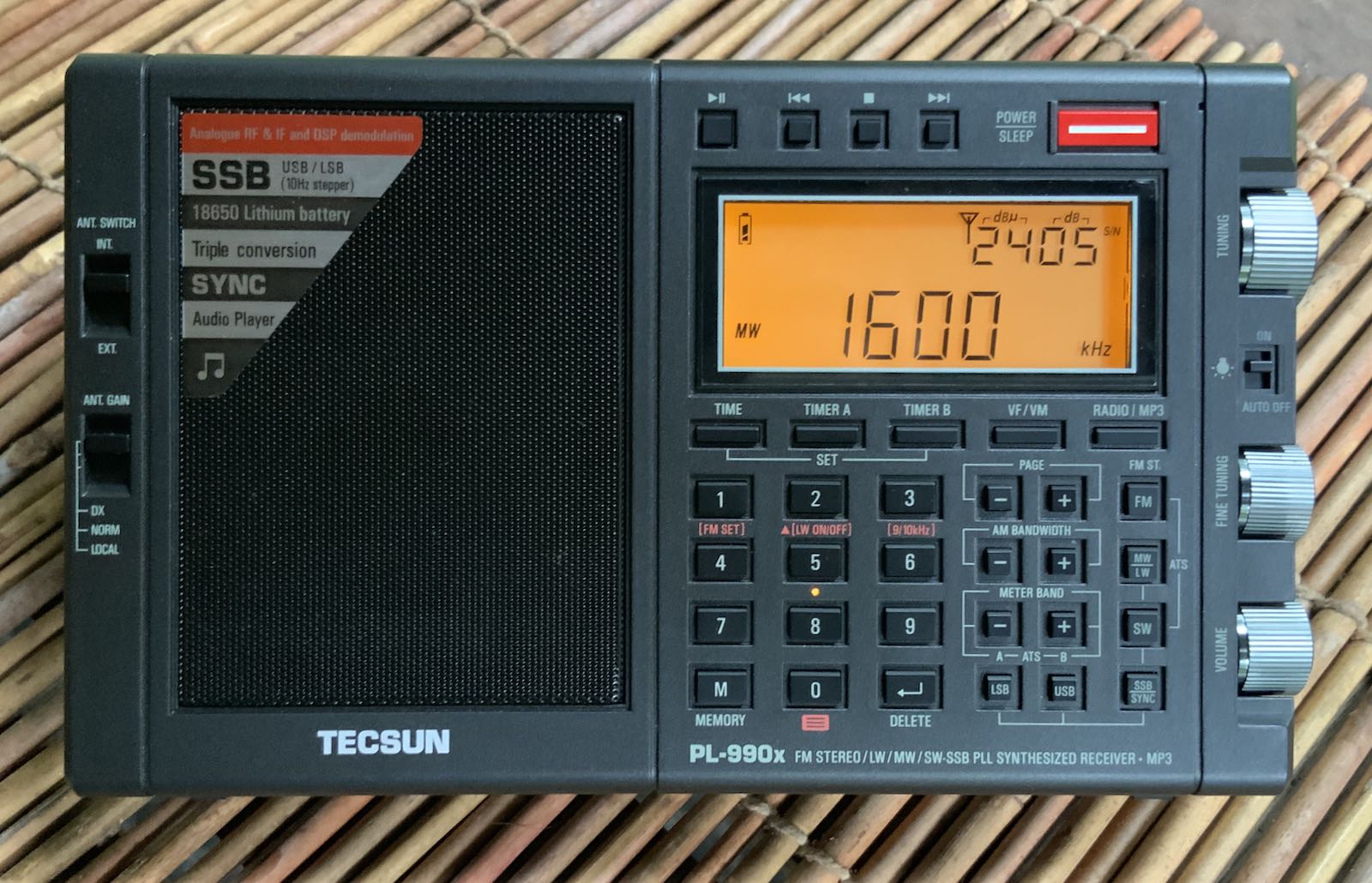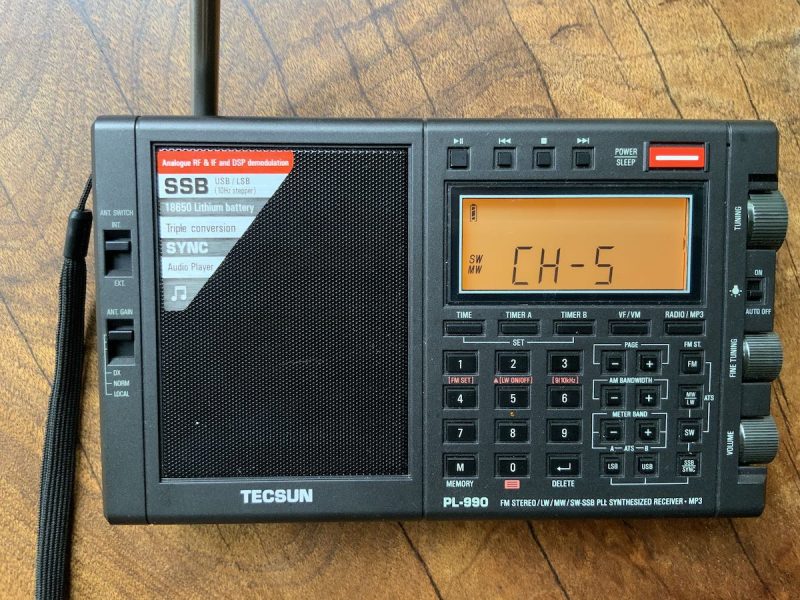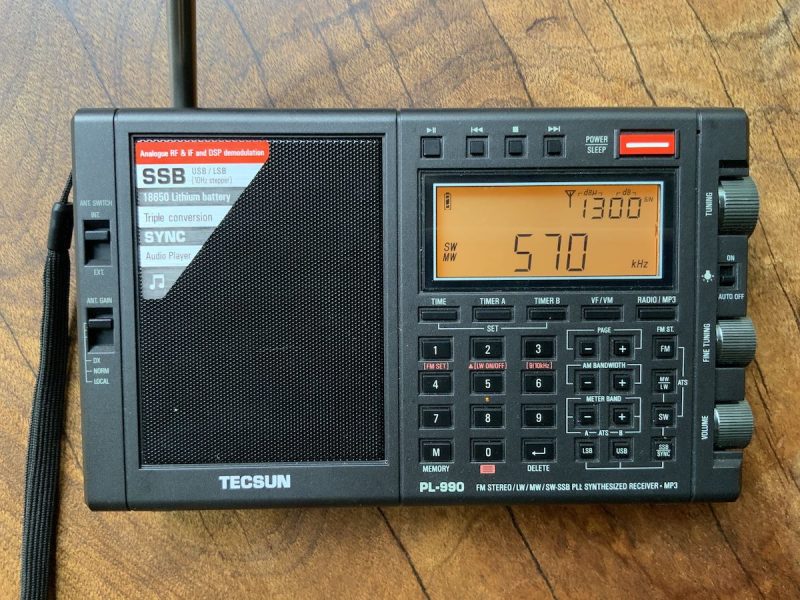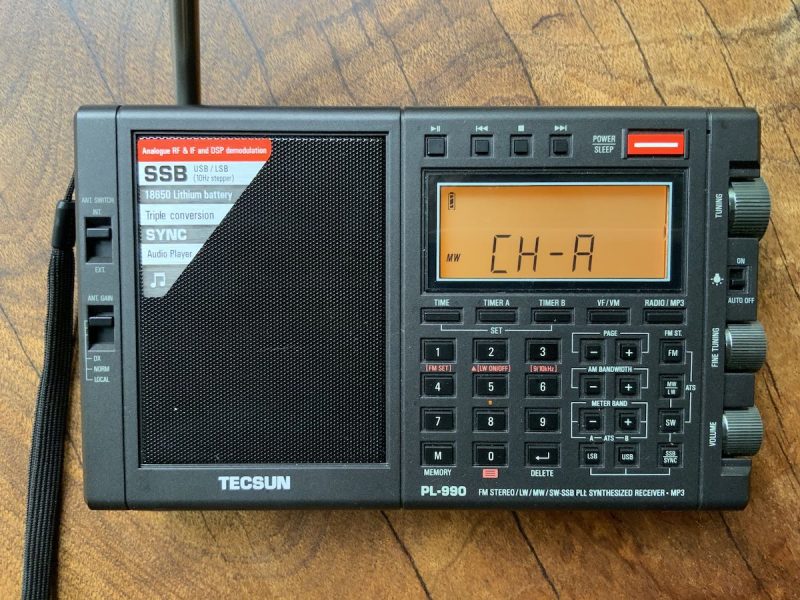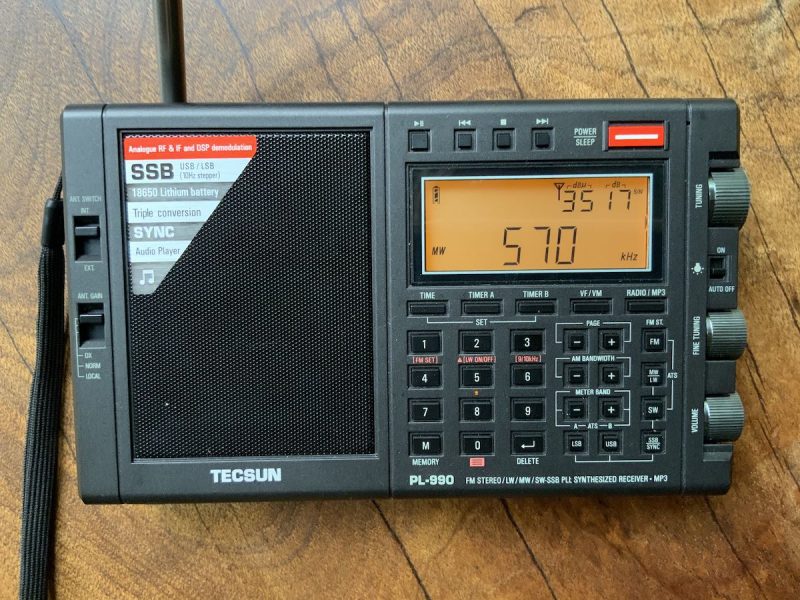Test #5: Radio Exterior de España 9,690 kHz
In this test (click here for #1, here for #2, here for #3, and here for #4) we’ll listen to the Icom IC-705, and one other comparable radio, tuned to Radio Exterior de España on 9,690 kHz. I picked REE, in this case, because it is a blowtorch station and I could take advantage of the IC-705’s maximum AM filter width of 10 kHz.
I’ve done my best to match these radios in terms of audio and receiver settings, but it’s certainly not perfect–these are essentially real world, not laboratory conditions.
Notes:
- Both radios are using the same antenna via my ELAD ASA15 Antenna Splitter Amplifier
- Both radios are set to the same bandwidth: 10 kHz
- I’ve tried to match AGC settings on all radios
- Both radios have different audio EQ characteristics–not all are fully adjustable
- Both have separate recording devices and are not matched perfectly in terms of audio levels. In other words, you may need to adjust your volume a bit to compare.
My advice would be to focus on aspects like signal intelligibility, selectivity and signal to noise.

